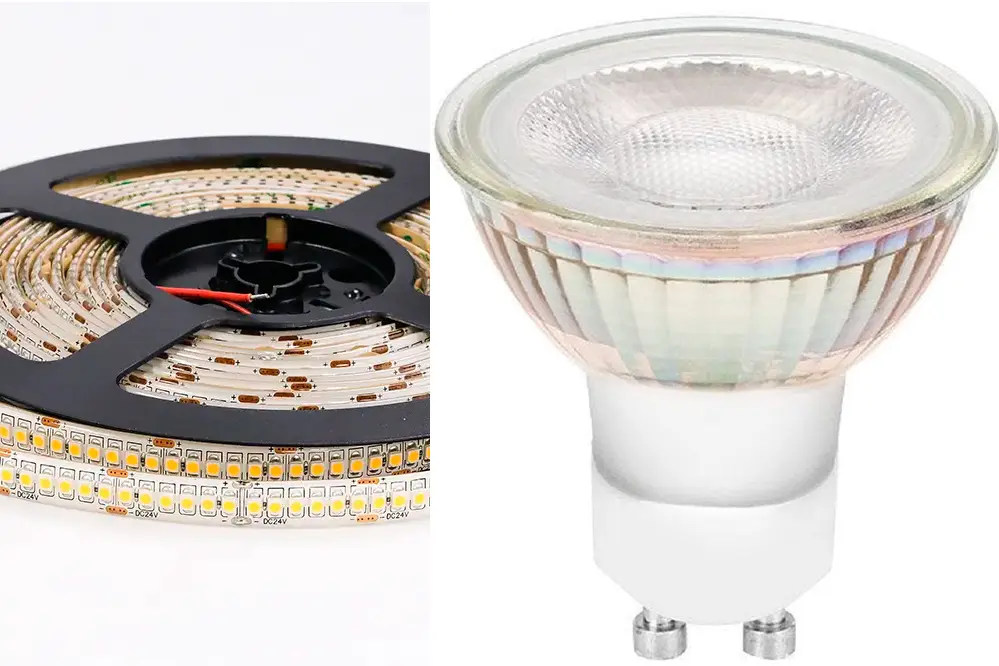Choosing the right lighting can transform any space, creating the perfect ambiance and enhancing both functionality and aesthetics. Whether you’re illuminating a cozy living room, a sleek office, or an inviting outdoor area, the type of lighting you select plays a crucial role. In this blog post, we delve into the comparison between two popular lighting options: LED strip lights and spotlights. Each offers unique benefits and potential drawbacks, making the decision a bit challenging but ultimately rewarding.
LED strip lights and spotlights serve different purposes and excel in various applications. LED strip lights are known for their flexibility, energy efficiency, and aesthetic appeal, making them ideal for creative and decorative lighting projects. On the other hand, spotlights provide focused, intense illumination, perfect for highlighting specific areas or objects. Understanding the strengths and limitations of each can help you make an informed choice that aligns with your lighting needs and design goals.
I’m Tom, and I’ve been immersed in the LED lighting industry since 2005. With extensive experience and a deep understanding of LED technology, particularly LED strip lights, I’ve developed this blog post to share my insights and expertise. My goal is to provide you with a comprehensive guide that will help you navigate the complexities of choosing between LED strip lights and spotlights. Drawing from years of hands-on experience and industry knowledge, I’ve crafted this article to be both informative and engaging.
So, whether you’re a lighting enthusiast or a professional looking to enhance your space, this blog post is designed to guide you through the decision-making process. Let’s dive right in and explore the fascinating world of LED strip lights and spotlights, uncovering the best options for your unique lighting needs!
Understanding LED Strip Lights
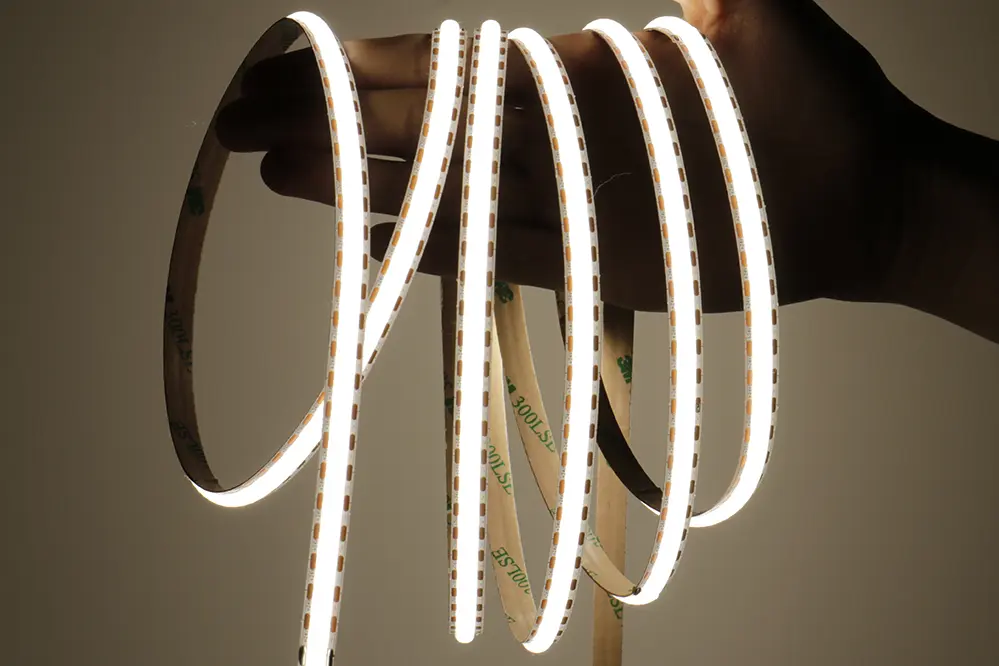
What Are LED Strip Lights?
LED strip lights are flexible circuit boards populated with light-emitting diodes (LEDs) that emit light when powered. These strips are available in various lengths, colors, and brightness levels, making them highly versatile for different applications. Common uses of LED strip lights include accent lighting, under-cabinet lighting, backlighting for televisions, and decorative lighting in both residential and commercial settings.
Advantages of LED Strip Lights
Energy Efficiency
One of the most significant advantages of LED strip lights is their energy efficiency. LEDs consume significantly less power compared to traditional incandescent or fluorescent bulbs, making them an eco-friendly and cost-effective lighting solution. For instance, a typical LED strip light consumes about 7-10 watts per meter, whereas an incandescent bulb might consume 60 watts for the same light output.
Flexibility and Versatility
LED strip lights are incredibly flexible, allowing them to be bent and shaped to fit various spaces and designs. This flexibility makes them ideal for creative lighting projects, such as outlining architectural features, creating mood lighting, or adding a touch of elegance to any room. They can be cut to specific lengths and connected with connectors, and with dimmable capabilities, they are suitable for both small and large installations.
Aesthetic Appeal
With a wide range of colors and brightness levels, LED strip lights offer endless possibilities for enhancing the aesthetic appeal of any space. They can be used to create stunning visual effects, highlight specific areas, or add a modern touch to your interior design. RGB LED strips, for example, can change colors and create dynamic lighting effects, perfect for parties or themed events.
Disadvantages of LED Strip Lights
Installation Challenges
While LED strip lights are versatile, their installation can be challenging, especially for those unfamiliar with electrical work. Properly securing the strips, connecting them to a power source, and ensuring even lighting distribution require careful planning and execution. Additionally, some installations may require soldering or the use of specific connectors, which can be daunting for beginners.
Potential for Uneven Lighting
LED strip lights can sometimes produce uneven lighting, particularly if not installed correctly. This issue can be mitigated by using high-quality strips and ensuring proper spacing and alignment during installation. Diffusers or aluminum channels can also be used to create a more even light distribution and enhance the overall appearance.
Understanding Spotlights
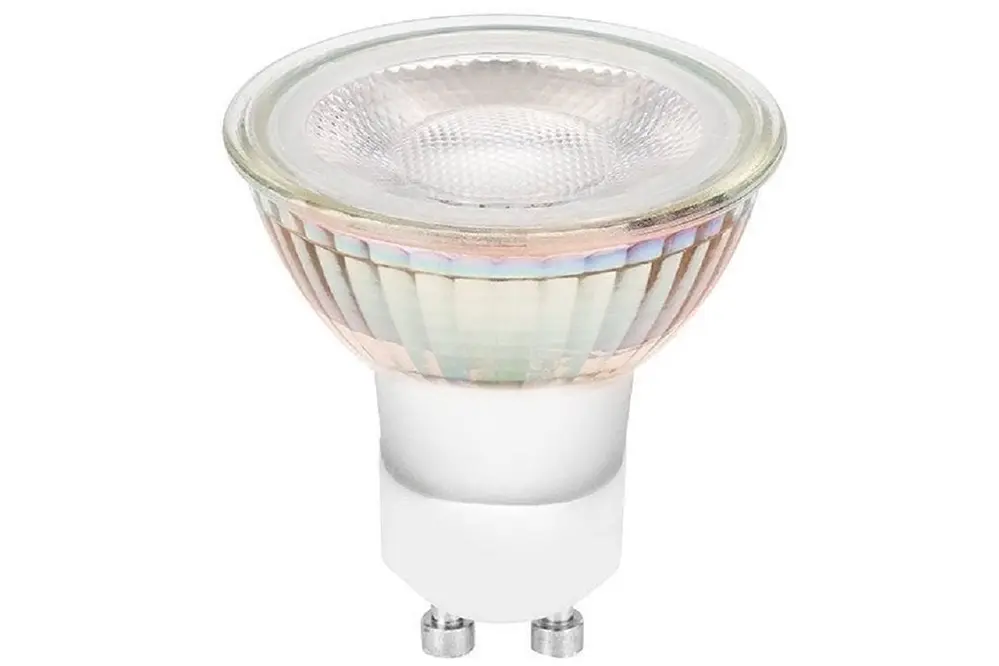
What Are Spotlights?
Spotlights are focused light fixtures that emit a concentrated beam of light, often defined by their beam angle. They are commonly used to highlight specific areas or objects, such as artwork, architectural features, or outdoor landscapes. Spotlights come in various styles, including recessed, track, and outdoor spotlights, each designed for specific applications. They can be adjusted to direct light precisely where it’s needed, making them highly versatile.
Advantages of Spotlights
Focused and Intense Lighting
Spotlights provide focused and intense lighting, making them ideal for highlighting specific areas or objects. This feature is particularly useful in settings where accent lighting is needed to draw attention to particular elements. For example, in a gallery, spotlights can be used to illuminate artwork, creating a dramatic effect and enhancing the viewer’s experience.
Great for Highlighting Specific Areas
Whether you’re showcasing a piece of art, illuminating a pathway, or accentuating a feature wall, spotlights excel at highlighting specific areas with precision and clarity. They can be used to create focal points in a room, drawing attention to key elements and adding depth to the overall design.
Long Lifespan
High-quality spotlights, especially those using LED technology, have a long lifespan. This longevity reduces the need for frequent replacements, making them a cost-effective lighting solution in the long run. LED spotlights can last up to 50,000 hours, significantly longer than traditional halogen or incandescent spotlights.
Disadvantages of Spotlights
Higher Energy Consumption
Compared to LED strip lights, spotlights generally consume more energy, especially if multiple units are used to achieve the desired lighting effect. This higher energy consumption can lead to increased electricity costs over time. However, choosing LED spotlights over traditional halogen spotlights can mitigate this issue, as LEDs are more energy-efficient.
Limited Coverage Area
Spotlights are designed to provide focused lighting, which means they have a limited coverage area. This limitation can be a drawback in spaces where broader illumination is required. To achieve comprehensive lighting, multiple spotlights may be needed, which can increase both the initial cost and energy consumption.
Key Comparisons
Brightness and Coverage
When comparing brightness levels, spotlights typically offer more intense and focused illumination, making them ideal for accent lighting. In contrast, LED strip lights provide a more diffused and even light distribution, suitable for ambient and decorative lighting. The choice between the two depends on whether you need concentrated light for specific areas or broader coverage for general illumination.
| Feature | LED Strip Lights | Spotlights |
|---|---|---|
| Brightness Level | Moderate to High | High to Very High |
| Light Distribution | Diffused and Even | Focused and Intense |
| Ideal Use | Ambient and Decorative | Accent and Task Lighting |
Energy Efficiency
LED strip lights are more energy-efficient than spotlights, consuming less power while providing adequate brightness, which can significantly lower your electricity bill. This efficiency translates to lower electricity bills and a reduced environmental footprint. Spotlights, while effective for focused lighting, tend to use more energy, especially when multiple units are required.
| Feature | LED Strip Lights | Spotlights |
|---|---|---|
| Power Consumption | 7-10 watts per meter | 10-20 watts per unit |
| Energy Efficiency | High | Moderate |
| Environmental Impact | Low | Moderate to High |
Installation and Maintenance
LED strip lights can be more challenging to install due to their flexible nature and the need for precise placement. However, once installed, they require minimal maintenance. Spotlights, on the other hand, are generally easier to install but may require more frequent maintenance, especially if used outdoors or in high-traffic areas.
| Feature | LED Strip Lights | Spotlights |
|---|---|---|
| Installation Difficulty | Moderate to High | Low to Moderate |
| Maintenance Needs | Low | Moderate |
| Professional Help | Often Required | Sometimes Required |
Design and Aesthetics
Both LED strip lights and spotlights offer unique design possibilities. LED strip lights are perfect for creating modern, sleek designs with their flexibility and range of colors. Spotlights, with their focused beams, are excellent for highlighting specific features and adding depth to a space. The choice between the two depends on your design goals and the ambiance you wish to create.
| Feature | LED Strip Lights | Spotlights |
|---|---|---|
| Design Flexibility | High | Moderate |
| Color Options | Wide Range | Limited |
| Aesthetic Appeal | Modern and Sleek | Classic and Dramatic |
Best Use Cases
When to Choose LED Strip Lights
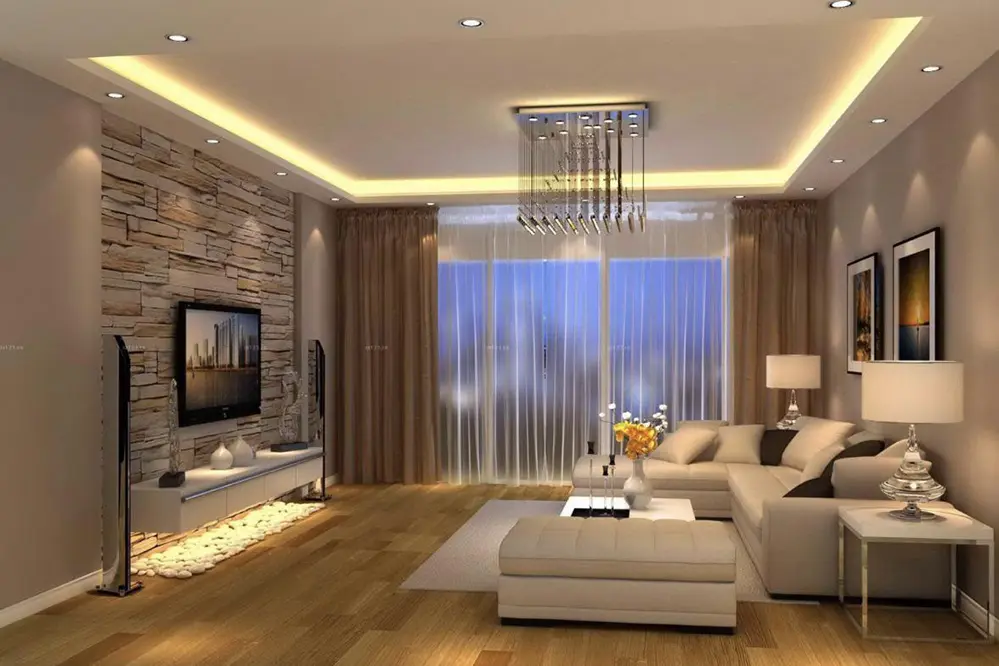
LED strip lights are ideal for scenarios where flexibility, energy efficiency, and aesthetic appeal are paramount. Practical examples include:
- Under-Cabinet Lighting: Enhances visibility and adds a modern touch to kitchens. LED strip lights provide even illumination, making it easier to see while cooking or preparing food.
- Accent Lighting: Highlights architectural features, such as coves and niches. They can be used to create a warm and inviting atmosphere in living rooms or bedrooms.
- Backlighting: Provides a soft glow behind televisions or mirrors, reducing eye strain and adding a decorative element. This type of lighting is perfect for creating a cozy ambiance in home theaters or bathrooms.
- Decorative Lighting: Adds ambiance to living rooms, bedrooms, and outdoor spaces. LED strip lights can be used to outline pathways, decks, or garden features, enhancing the overall aesthetic of your outdoor area.
When to Choose Spotlights
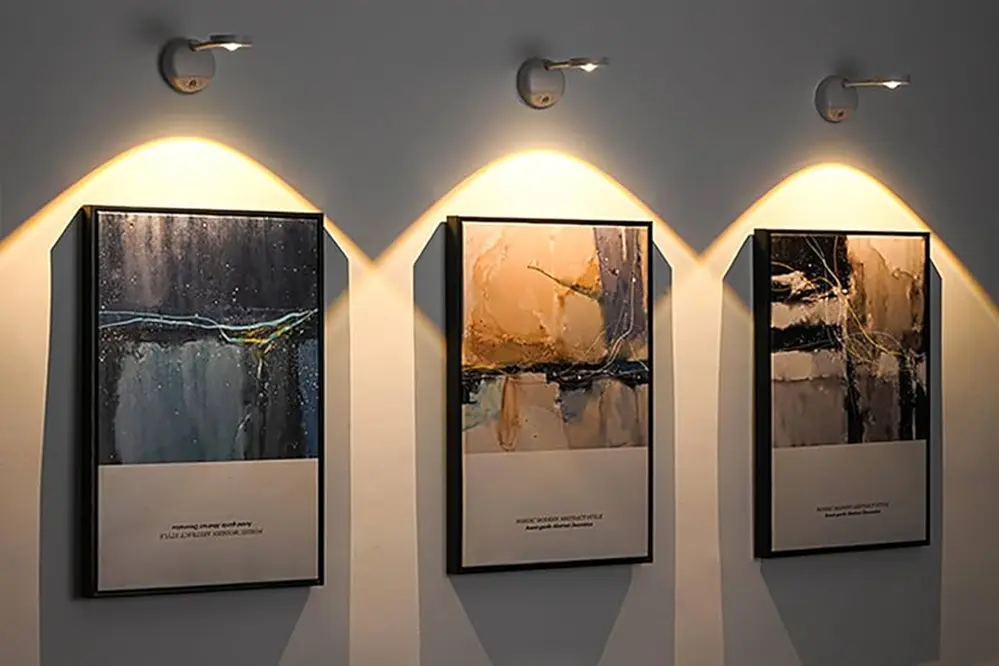
Spotlights are best suited for applications requiring focused and intense lighting. Practical examples include:
- Artwork Illumination: Highlights paintings, sculptures, and other art pieces. Spotlights can be adjusted to direct light precisely where it’s needed, enhancing the visual impact of the artwork.
- Feature Wall Lighting: Accentuates textured or colored walls, creating a focal point in the room. This type of lighting adds depth and dimension to your interior design.
- Outdoor Landscaping: Illuminates pathways, gardens, and architectural features, enhancing safety and aesthetics. Spotlights can be used to highlight trees, shrubs, or water features, creating a dramatic effect in your outdoor space.
- Task Lighting: Provides concentrated light for activities such as reading, cooking, or working. Spotlights can be installed in home offices, kitchens, or reading nooks to ensure adequate illumination for specific tasks.
Making the Right Choice
Assessing Your Needs
When choosing between LED strip lights and spotlights, it’s essential to assess your specific needs and preferences. Consider factors such as the purpose of the lighting, the desired ambiance, and the areas you wish to illuminate. Personal preferences and project requirements play a crucial role in making the right choice.
Budget Considerations
Cost is another critical factor to consider. LED strip lights are generally more cost-effective in terms of energy consumption and long-term maintenance. However, the initial installation cost may be higher due to the need for precise placement and potential professional assistance. Spotlights, while easier to install, may lead to higher energy bills over time. Conducting a cost analysis and considering long-term financial implications will help you make an informed decision.
| Feature | LED Strip Lights | Spotlights |
|---|---|---|
| Initial Cost | Moderate to High | Low to Moderate |
| Energy Costs | Low | Moderate to High |
| Maintenance Costs | Low | Moderate |
| Long-Term Savings | High | Moderate |
Conclusion
In conclusion, both LED strip lights and spotlights offer distinct advantages tailored to different lighting needs. LED strip lights shine in flexibility, energy efficiency, and aesthetic appeal, making them perfect for ambient and decorative purposes. Spotlights, with their focused and intense illumination, excel at highlighting specific areas and adding depth to any space. By considering your specific needs, preferences, and budget, you can choose the ideal lighting solution that enhances both the functionality and aesthetics of your environment, creating a comfortable and inviting atmosphere.
For those seeking high-quality LED strip lights and LED neon strips, consider reaching out to Unitop, a professional Chinese manufacturer renowned for their expertise and exceptional products in the LED lighting industry.
